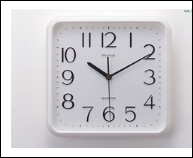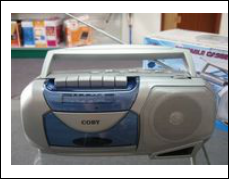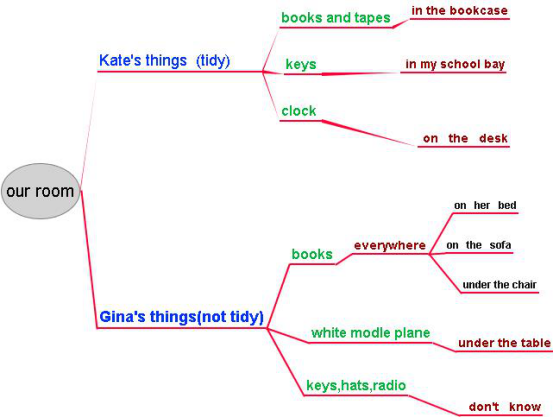Unit4 Where’s my schoolbag ?
第一课时: New words and phrases
Teaching and Learning Goals:
一、知识和能力目标:
1. 能争取使用下列词汇造句子(Curriculum words)
where,table,bed,sofa,chair,on,under,come,desk,think,room,their,hat,head,know,radio,clock,tape,
player,model,plane,tidy,but,our,everywhere,always.
2. 能争取学会使用下列常用短语造句子(Useful expressions)
come on ,tape player,model plane
3. 能认读下列词汇(non-curriculum words)
bookcase,yeah
4. Understand, translate and retell a passage made up of the above Curriculum words and phrases according to a mind map (理解、翻译并复述用课标内单词编写的故事。)
二、学习策略
Remember the Curriculum words and phrases in specific situations. (在语境中记忆单词)
三、情感目标:
Enable the students to place the things in order.(培养学生整齐摆放物品的生活习惯)
Teaching and learning steps
Step 1 Learn to read the words and phrases on P89-90
1. Ask the students to read the words by themselves using the phonetics, underline the difficult words.
2. Encourage the students to read the difficult words with their partners.
3. Get two or three middle-level students to read all the words, the others listen and correct their mistakes in pronunciation. If necessary, the teacher helps them.
4. Read after the tape, imitate the pronunciation.
5. The students read aloud to memorize the words. (The teacher walks around to see whether students have any questions.)
(设计意图:该步骤能有效培养学生个人识读单词的学习习惯,这是学习单词的重要一步;能培养学生自主、探究和合作学习的能力。首先学生自己根据音标识读单词,并标出识读时有困难的单词。接着两人一组或以小组为单位解决遇到的困难。然后找一两个同学读单词,请好学生先纠正,还有问题,教师再更正。最后让学生跟录音读, 该环节只会读即可。降低识读难度,提高全体学生积极性。鼓励没过关的学生课前课后努力赶上。)
Step 2 Learn to remember words on P89-90
一、  Remember the words by looking at pictures.
Remember the words by looking at pictures.
table and chairs
There is a table and some chairs in the room.

sofa
This is a blue sofa.
 desk
desk
This is my desk.

bed
This is her bed.

hat
This is his hat.

room
This is our room.

radio
This is a radio.

clock
This is a clock.

tape
This is a tape.

tape player
This is my tape player.

model plane
This is a model plane.

bookcase
This is a bookcase.


(设计意图:运用实物、图画创设语境,让学生直观地理解单词的意思,通过建立语境和语义之间的关系,促进理解、加深记忆,培养学生用英语思维的习惯。减少了学生对汉语的依赖,避免孤立地理解和记忆单词。)
二、Remember the words by their similar(same) pronunciations .
1.put mut nut but conj. 但是
2.here there where adv. 哪里
3.air fair hair chair n. 椅子
4. at fat sat hat n. 帽子
5.so soft sold sofa n. 沙发
6.no know [nəʊ] v. 知道,了解
7.there their [ðɛə] pron. 他们的
8.hour our ['aʊə(r)] pron. 我们的
【设计意图】 英语是拼音文字,引导学生对比练习理解单词的发音规律,建立单词音、形的对应关系,能够让学生利用已经学过的单词去对比新单词,或者由新单词引出未学过的单词,形成一个系统记忆。
三、Remember the words by conversion(转换) 、complex words (合成)and derivative(派生)如,
1.合成
(1)every(每一的)+where(哪里)—everywhere (adv.处处;到处)
(2)book(书)+case(箱,盒)—bookcase (n.书架;书柜)
(3) school(学校)+bag(包)—schoolbag (n.书包)
(4)base(基地)+ball(球)—baseball (n.棒球)
(5)note(笔记)+book(书)—notebook (n.笔记本)
(6)class(班级)+room(房间)—classroom (n.教室)
(7)after(在…之后)+noon(中午)—afternoon (n.下午)
(设计意图:本单元单词量不多,在新单词的基础上,再列举其它的合成词,让学生对合成词有一个清晰地认识,同时又巩固复习了前面学过的单词。)
2.转换
主格 |
形物主代词 |
I |
my |
you |
your |
he |
his |
she |
her |
they |
their |
we |
our |
3.派生
play+er player n 运动员
四、Remember the words or phases by matching itself with its meaning.
1.来,来到 head
2.快点儿 tidy
3.头 always
4.整洁的 think
5.总是 come
6.认为,思考 come on
(设计意图:运用不同形式教授单词,既减轻学生拼读单词的难度,同时又提高了学生识记单词的效率,培养学生有效的单词学习策略。)
Step 3 Consolidation of words
1.Give the students a few minutes to try to memorize the words first . Then get them to work in pairs to spell the words or write down the words with the Chinese. Underline the words they haven’t grasped.
2. The teacher can also give some important words and get the students to try to have a short dictation.
1.哪里 2.认为,思考 3.处处,到处 4.整洁的 5.总是 6.他们的 7.知道,了解 8.头 9.收音机 10.快点儿
(设计意图:给一定时间让学生消化,并通过小组或全体默写的形式来督促学生,做到及时的查缺补漏。以便达到“趁热打铁”的效果。)
Step 4.Read the story and translate it.
1. Ask the students to read the story, and underline the new words.
2. Translate the story into Chinese in groups of two.
3. Read the story fluently by themselves.
Hi, I’m Kate, and my sister is Gina. I think I’m tidy, but Gina is not. In our room, my books and tapes are in the bookcase. My keys are in my schoolbag. I have a clock. It’s on the desk. Gina’s books are everywhere---on her bed, on the sofa and under the chair. The white model plane is hers. It’s under the table. “Where are my keys? Where’s my hat? Where’s my radio? Come on, Kate!” Gina always asks. But I don’t know.
喂,大家好,我叫凯特,我的妹妹叫吉娜。我认为我的房间整洁,但是吉娜的不整洁。在我们的房间里,我的书和磁带在书橱里。我的钥匙在我的书包里。我有一块时钟,它在桌子上。吉娜的书到处都是---在她的床上,在沙发上,在椅子下。白色的飞机模型是她的。它在桌子下面。“我的钥匙在哪里?我的帽子在哪里?我的收音机在哪里?快点儿告诉我,凯特”吉娜总是问。但是我不知道。
(设计意图:词不离句,句不离篇。学生在掌握本单元单词的基础上,再学习由本单元的生词编成的一篇故事,引导学生不仅记忆词汇本身的意义,同时在具体的语境中体会它的意义。有助于学生理解和使用。同时通过简单明了的小故事,还能够增加学生学习英语的兴趣。)
Step 5 Mind map
1. Get the students to read the mind map and fill in the mind map according to the story, they can discuss in groups.
2. Get the students to retell the article using the mind map .

(设计意图)通过思图的设计,在学生头脑中形成较为有条理、有层次的知识体系,进一步引导学生在故事复述中提高记忆和使用本单元单词及短语的能力。
Step 6 当堂检测
一、根据要求写出单词的适当形式。
1.know(同音词)________ 2.there(同音词)__________
3.hour(同音词)__________ 4.their(主格)________
5.our(主格)__________
二、根据句意和首字母或汉语提示完成句子。
1. All his books are in the b_______.
2. ---Where’s her white model plane?
---It’s ______ (在…下面) the table.
3. The ______ (收音机) is on the desk.
4. ---Where are my clock?
---Let me _____ (想一想).
5. Kate’s room is always ______(整洁的).
三、用所给单词的适当形式填空。
1.---Where are the books?
---_____(it) are in the schoolbag.
2.---Who’s that girl?
---_____(her) is my sister.
3. These are your _____(key).
4._____(be) their pencils on the desk?
5. Where _____(be) the bookcase?
(设计意图:通过习题的检测使学生对单词写的方面更进一步的巩固,学生会更明确哪一些单词没掌握好,以便下一步的记忆)
当堂检测答案:
一、1.no 2.their 3.our 4.they 5.we
二、1.bookcase 2.under 3.radio 4.think 5.tidy
三、1.They 2.She 3.keys 4.Are 5.is
Step7 Homework
1.Read the words fluently by themselves. ( ★ )
2.Write their own sentences with important words. ( ★★ )
3.Work in groups and write their own article with important words. ( ★★★ )
亮点:
本单元的单词课堂设计基本涵盖了本单元的词汇,单词的认读部分体现了自主学习基础上的合作学习;单词的记忆部分意在引导学生形成有效的单词学习策略;故事编写则是让学生在语义场范畴内体会单词的运用;而Mind map更是培养学生树立起语篇的脉络意识以及全面分析问题和解决问题问题的能力。
不足之处:
部分学生对于语音掌握的不够熟练,不敢大胆开口拼读单词。
使用建议:
教师要有计划地渗透语音教学,教会学生运用语音拼读单词的基本规则,同时必须准备完善的多媒体课件,才能有效地增加课堂效率。

